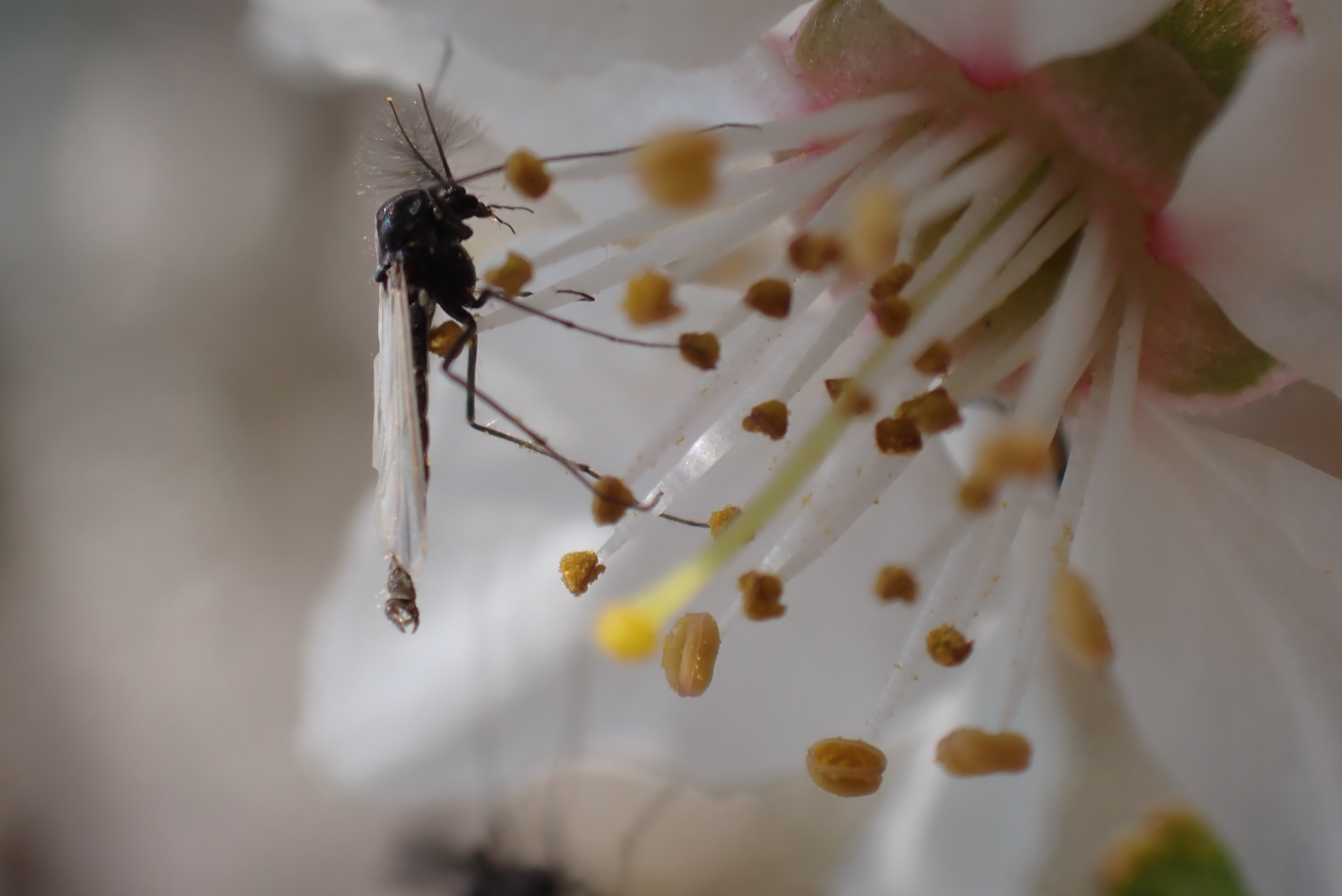Smaller and with lower survivability: the effects of climate change on aquatic insects
Aquatic insects play a vital role in ecosystems. The combined effects of declining insect numbers and shrinking body sizes could lead to significant disruptions in aquatic ecosystems.

Adult non-biting midge, featured in the experiment.
Credit: Viktor Baranov
An international study led by the Doñana Biological Station - CSIC has shown that lower oxygen availability in warm waters—caused by rising temperatures— may be leading to a reduction in the size of aquatic insects. This shrinkage is linked to lower survivability and fitness of aquatic insects, with harmful consequences for aquatic ecosystems, including decreased fish availability due to important impacts on the food web. The study, with the collaboration of the Slovakian Academy of Science and the University of Granada, was published in the journal Ecological Entomology.
The global rise in temperatures is influencing further warming of marine and inland waters, which causes, among other effects, a decrease in the solubility of oxygen. The lower concentration of oxygen in the water affects fish, aquatic insects and micro-organisms that need oxygen to breathe.
" Decreasing of the size of the aquatic insects is the other aspect of the insect decline, which is also connected to the rising global temperatures – not only there are fewer insects, they can be also smaller," explains Viktor Baranov, a researcher at the Doñana Biological Station and lead author of the study. "We’re not just seeing fewer insects—those that remain are also smaller. This double effect of the decrease of numbers and of sizes of aquatic insects undermines their ability to maintain crucial ecosystem functions”
To investigate this phenomenon, the research team designed an experiment to explore the relationship between water temperature, oxygen concentration, and body size in Chironomus riparius, a species of non-biting midge whose larvae are aquatic. They compared insect size and survival under six different scenarios: three at 20°C with high, medium, and low oxygen levels, and three at 30°C under the same oxygen conditions.
The results were clear and build upon the findings previously published by the researcher and other collaborators in 2021, when they confirmed that the size of non-biting midges was related to temperature.
Chironomus riparius, commonly known as non-biting midges, are named for their resemblance to common midges (Culicidae), but have important differences, especially the fact that they do not bite or feed on blood. Their genome has been sequenced and is used as a model for assessing environmental stress and the impact of pollutants in aquatic ecosystems.
Strong evidences
In this new study, larvae raised in warm, low-oxygen water were 10% smaller than those in the other five scenarios. These conditions also caused faster development and increased mortality rates.
"As climate change leads to water temperatures and oxygen becomes less soluble, these larvae are struggling to grow. This is due to the fact that respiration is essentially a motor of the animals´ growth " says Baranov. “Given their critical ecological roles, the impact of climate change on these organisms is deeply concerning."
Aquatic insects are crucial for water purification, water pollution monitoring, and maintaining food webs, as they serve as prey for many other species. Moreover, once they become adults, some species contribute to other essential processes such as crop pollination. Some of them also have recreational functions for humans, such as dragonflies, which have an important aesthetic and cultural component.
This study lays the groundwork for broader research into how climate change affects functional traits like body size, complementing existing data on declining insect populations. It also raises new questions about how the ecosystem effects of the shrinking animal sizes.

Reference
Baranov, V. Losana-García, J., Pascual, J., Fernández Bermejo, S. & Hamerlik, L., Impact of temperature and hypoxia on the size and survival of aquatic insects. Ecological entomology, early view online. https://doi.org/10.1111/een.13469
https://resjournals.onlinelibrary.wiley.com/doi/10.1111/een.13469